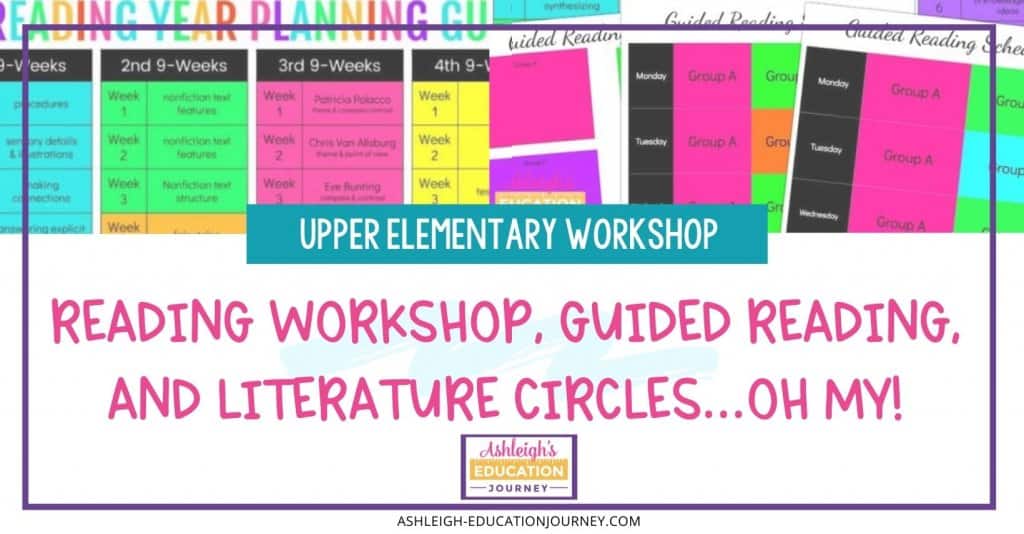
Teaching reading can be overwhelming with today’s instant access to curriculum, resources, and pictures on Pinterest, Facebook, Instagram. This post shares the ins and outs of teaching reading through reading workshop, guided reading, and literature circles and how you can use these strategies teach reading to upper elementary students.
Teaching Reading With Reading Workshop
You can think of reading workshop as the overall umbrella of reading instruction. Reading workshop can be used in conjunction with guided reading or literature circles. There are several components to teaching reading, and you can include all of the parts within the reading workshop framework. The framework of reading workshop includes:
- Mini Lesson: A reading workshop lesson typically begins with the teacher reading aloud to students. The teacher can discuss and model a variety of comprehension strategies during the mini lesson. During this time, teachers often read a mentor text to students.
- Independent Reading: Students self-select books to read independently. During this time, students should concentrate on gaining meaning from the text.
- Closing: At the end of reading workshop some students may share what they’ve read and discuss the reading strategies they applied during their reading time.
Where do I start?
Before you can begin teaching reading, assess students to see where they are as readers. There are many great assessments out there, and many teachers have district required assessments. Hopefully, those assessments are beneficial for you and give you the information you need. We’re required to use DIBELS and DRA, so that’s what I use. I also have access to students’ LEXILE score which is given through our state assessment and their MAPS reading score. While I do use the data from those assessments, it’s important to recognize that standardized tests do not necessarily give you the whole picture.
DIBELS
DIBELS assesses reading fluency. I do use caution with this assessment, as it is just a piece of information. It’s a good starting place. You may later find that some students with slower fluency have excellent reading comprehension and some students with excellent fluency struggle greatly with reading comprehension.
DRA
You can use DRA to look at fluency, as well as comprehension. While you do get more information from DRAs, they can be a pain to administer. It’s not a fast process. Once a student is reading well above grade level, I don’t prioritize this assessment.

Teaching Reading – The Mini Lesson
Once you’re finished with assessments and your students are able to read independently for at least 20 minutes, it’s finally time to really get started! The pacing and order of your lesson will completely depend on your school’s expectations of you. This is the pacing guide I follow with my reading units.
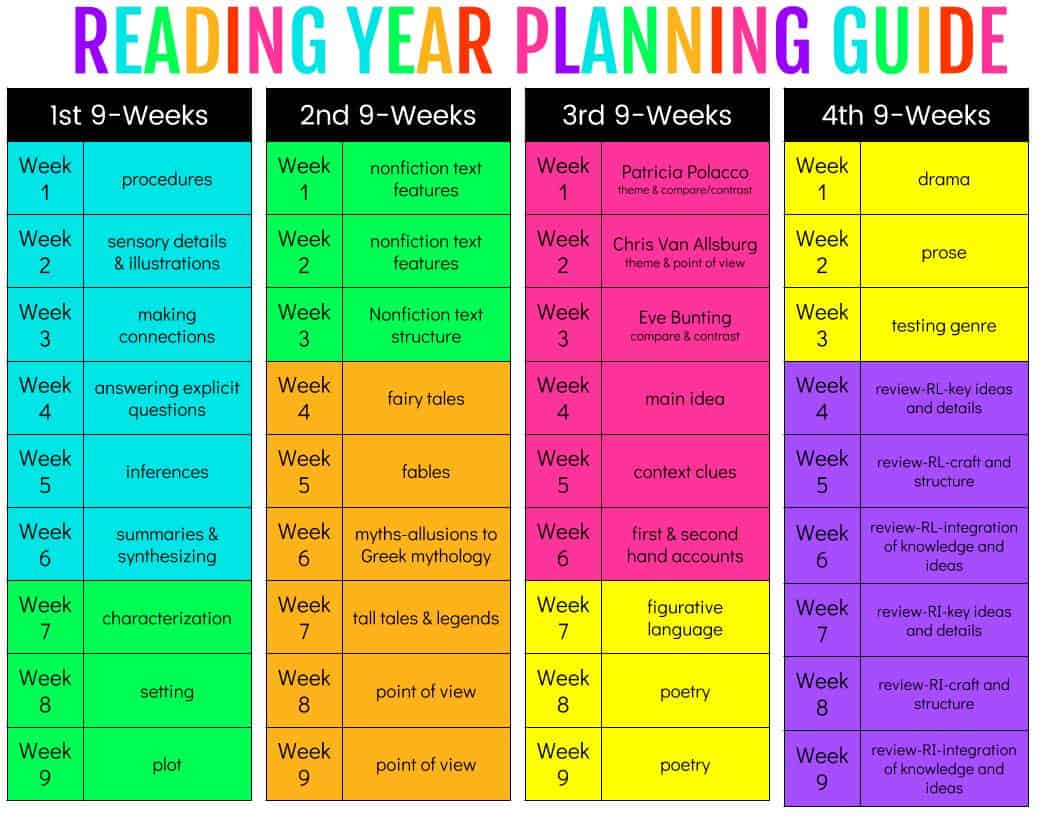
Since I’m following my reading unit, my mini lessons are a snap. I almost always begin my mini lesson with a picture book that I can use to teach a particular skill or strategy. Picture books are absolutely appropriate for upper elementary students, and students love them. I get bored easily and don’t like to read the same book year after year. So, you’ll see multiple options of mentor texts in my reading units. I left the recording sheets somewhat generic, so they can be used with ANY mentor text.
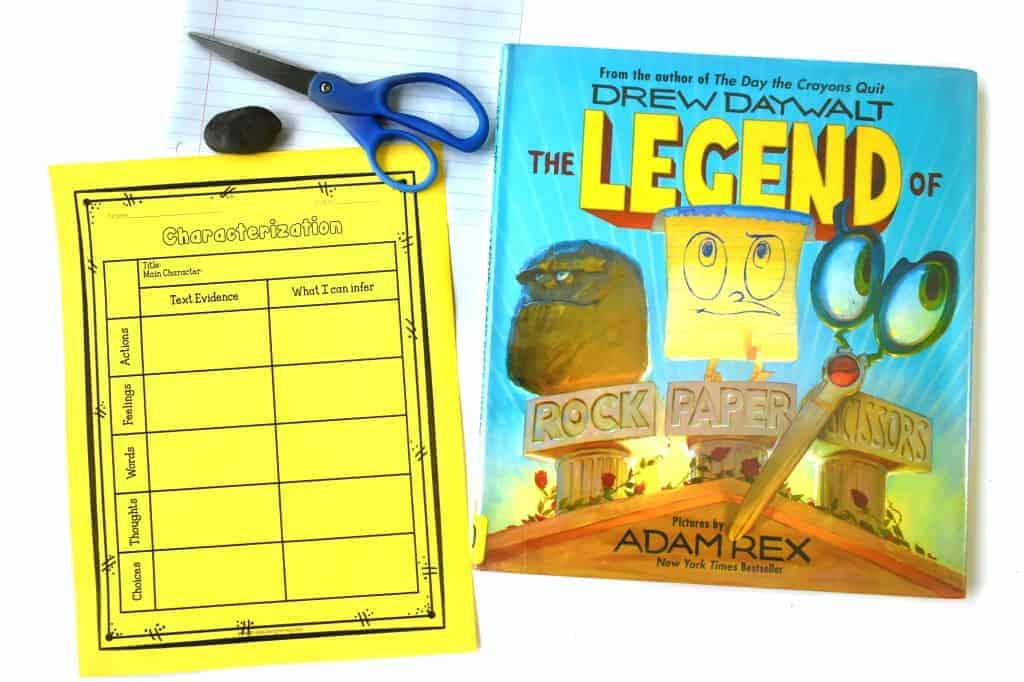
After the mentor text, we may have a class discussion, add to an anchor chart, or I may model how to complete a graphic organizer. When I’m pressed for time, I may skip the mentor text and complete the graphic organizer based on a previous mentor text.
Independent Reading
After the mini lesson, students move into the largest portion of the reading workshop framework. It’s often called “independent reading”, but there’s a lot going on during this time.
Independent Reading
Students should have the opportunity to read for enjoyment everyday (or almost everyday). Independent reading should not be treated as something “extra” students can do if they finish their work early. It should also not always include an accompanying task or worksheet. Students will never develop a love of reading if every time they read, they are required to do a reading-related activity afterward. Students who read independently become better readers, score higher on achievement tests in all subject areas, and have greater content knowledge than those who do not.
To Level or Not to Level
There is a lot of debate on whether or not to level students or to require students to read on their reading level. I like to find a happy balance. I determine students’ reading level, so I can monitor their growth. That information is for me, and I don’t let that level define my students. Students can often successfully read books at more than one level. If a child has a lot of background knowledge on a particular topic, s/he can typically read books about that topic that are above their reading level.
I have many students who are reading above grade level, and I do not require those students to read on their level. Just because a student can read a book, doesn’t mean s/he should read the book. We have to take into account maturity and interests. There is nothing wrong with a student who can read at a high school level curling up with a copy of Charlotte’s Web. Students shouldn’t miss out on classics, because the books are at the wrong reading level.
The Power of Choice
When teaching reading, it is important to allow students to select their own books or text for their independent reading time. When you let kids choose what they read, they are more willing to take risks and try new authors and genres. There are times when I encourage students to break away from reading ruts. I often do this by asking students to alternate between what they typically reading with something new and different. Never underestimate the value of a informal conversation about books.
It’s also important to make sure the students are not choosing books that are too difficult. Struggling readers will often pick a book that is too hard to look like they are reading. However, optimal learning and enjoyment occur when the book is at the right level of difficulty for the child. Children should be able to read at least 95% of the words in a text accurately. If I have a student who wants to read particular book that is too hard for them at the time, I may download an audio version of the book for them to read along with. Upper elementary students usually resist books that appear “babyish”. I try to find books that appear to be for older students, but are still easy to read. One of my favorites are High Noon Books.
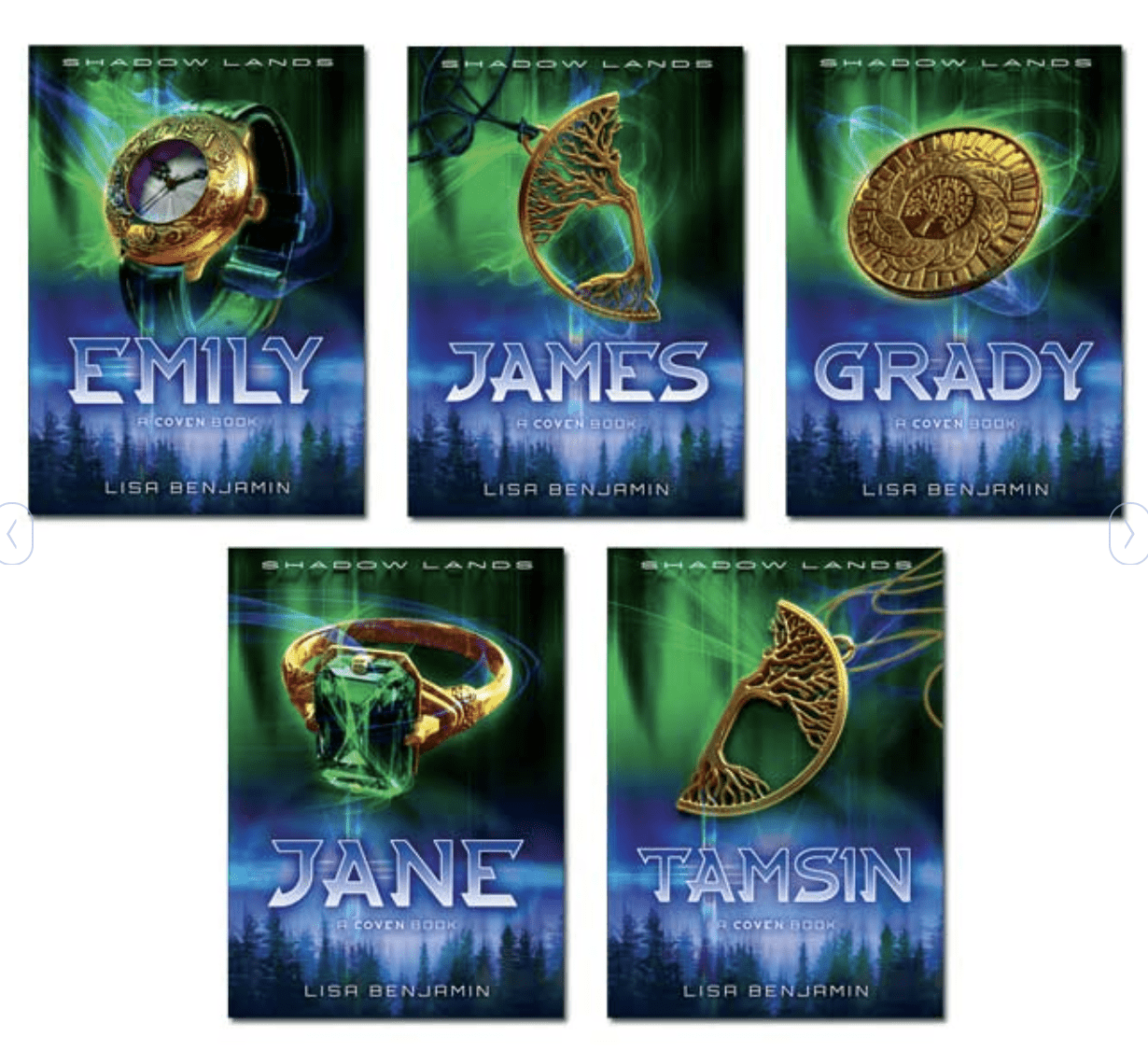
Teaching Reading With Guided Reading
Guided reading is a part of reading workshop. During this time, teachers choose reading material for students and a purpose for reading, and then guide students in reading strategies. In upper elementary, comprehension strategies are typically the main focus of development in guided reading.
A guided reading lesson lasts about 20 minutes. In the beginning of the lesson, the teacher introduces the book or text and connects students’ prior knowledge to what they will be reading, as well as set a purpose for reading. During this time, the teacher may introduce new vocabulary and discuss any unfamiliar concepts in the book. Then, students take turns reading the text. Students may read independently, in small groups, partner-read, or choral-read. After reading the text, students discuss the what they read and the comprehension strategies used.
Scheduling Guided Reading
Scheduling guided reading groups is a lot easier said that done. The first thing I do is make a list of who will be in what group. It’s important to keep reading groups flexible, because some students may quickly grow by leaps and bounds. The OCD in me wants to have the same number of students in each reading group, but that just isn’t real life. My group sizes range from 2-6. Occasionally, I have to decide what to do with a student who is the only one in a group. Do I meet with that student individually, or do I place him/her in the next best group?
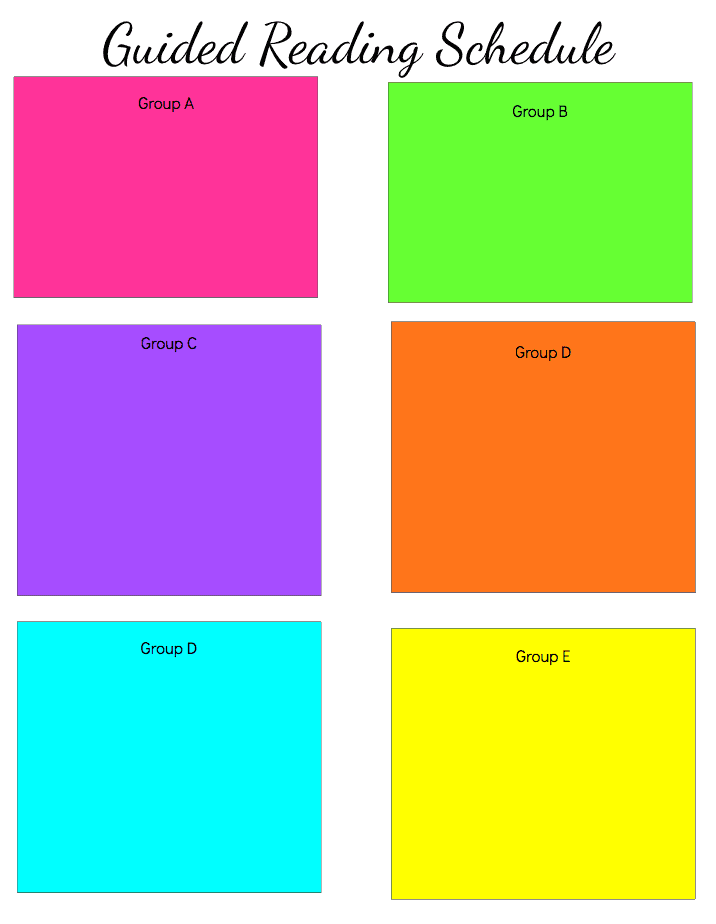
Once I know who is in what group, I decide when each group will meet. Below is the schedule I used when I had 80 minutes for reading. That worked perfectly, because I had time to meet with three groups a day. You can see that I meet with some groups more than others, and that is intentional. I meet with my students who need the most help five days a week.
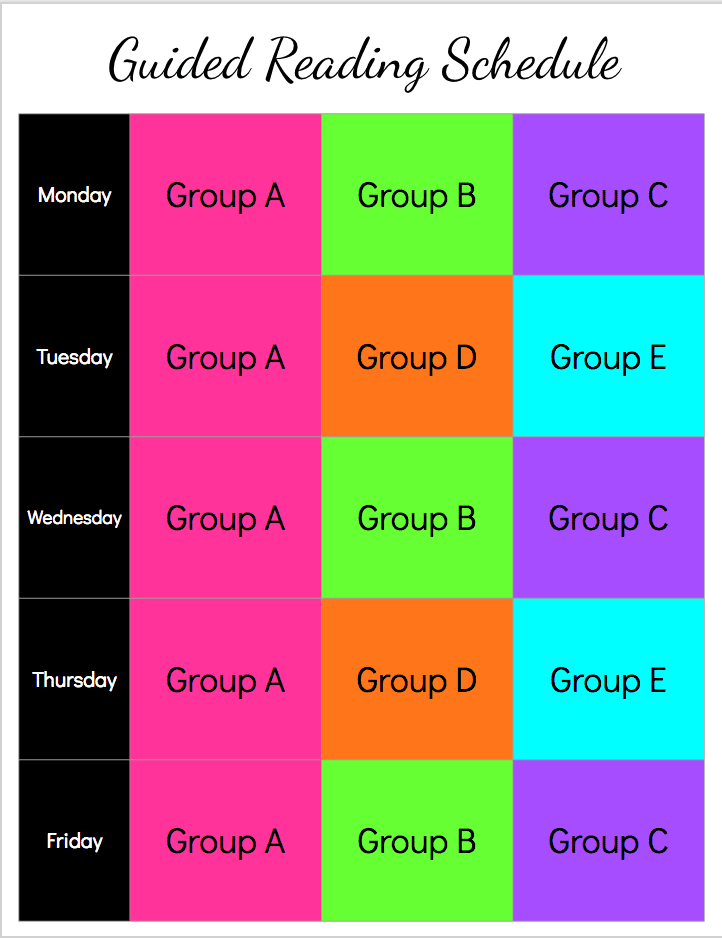
This year, I have an hour to teach reading, so I only have time to meet with two groups a day. I don’t love this, but we often have to play the hand we’re dealt. I meet with Group A five days a week and Group B three days a week. My struggle is only meeting with Group C and D once a week. I’d rather meet with them twice a week, but to do that, I’ll have a very large group. That’s the beauty of flexible grouping. I can try something, and if it doesn’t work, changing it is no big deal.
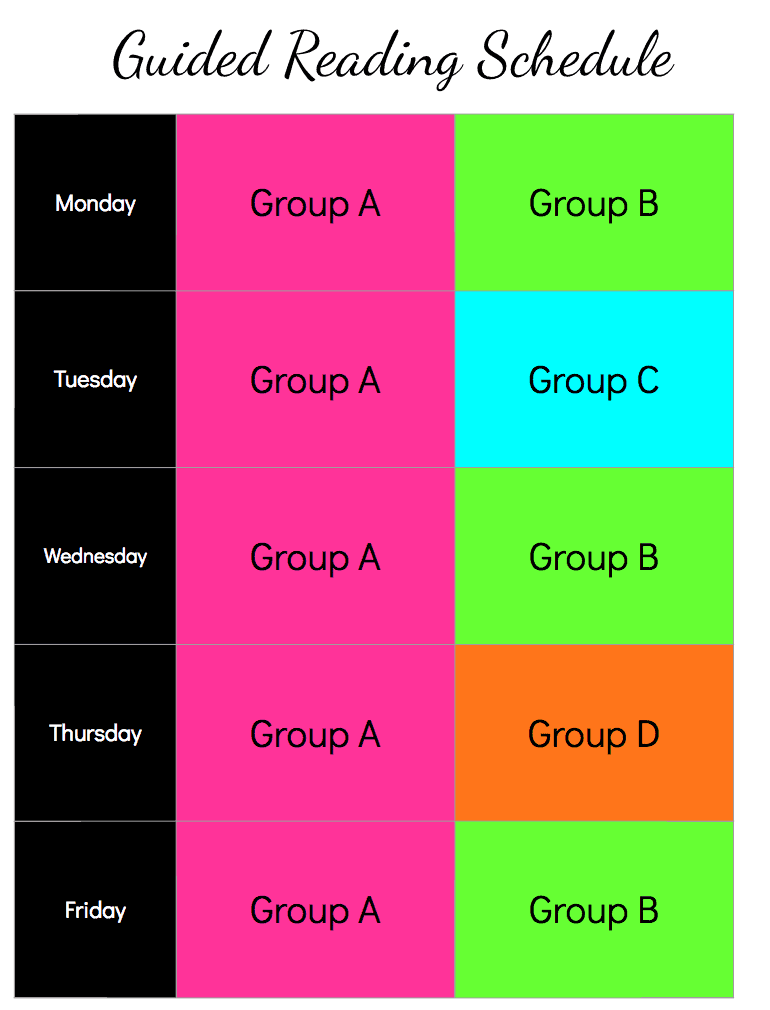
Planning Guided Reading Groups
Once you know who is in what group and when each group will meet, you can begin planning what you will teach in your guided reading groups. Below is the lesson plan format I use to plan my guided reading groups. Since this post is quite long, I’ve written a detailed post on reading groups that digs deeper into planning your guided reading instruction.
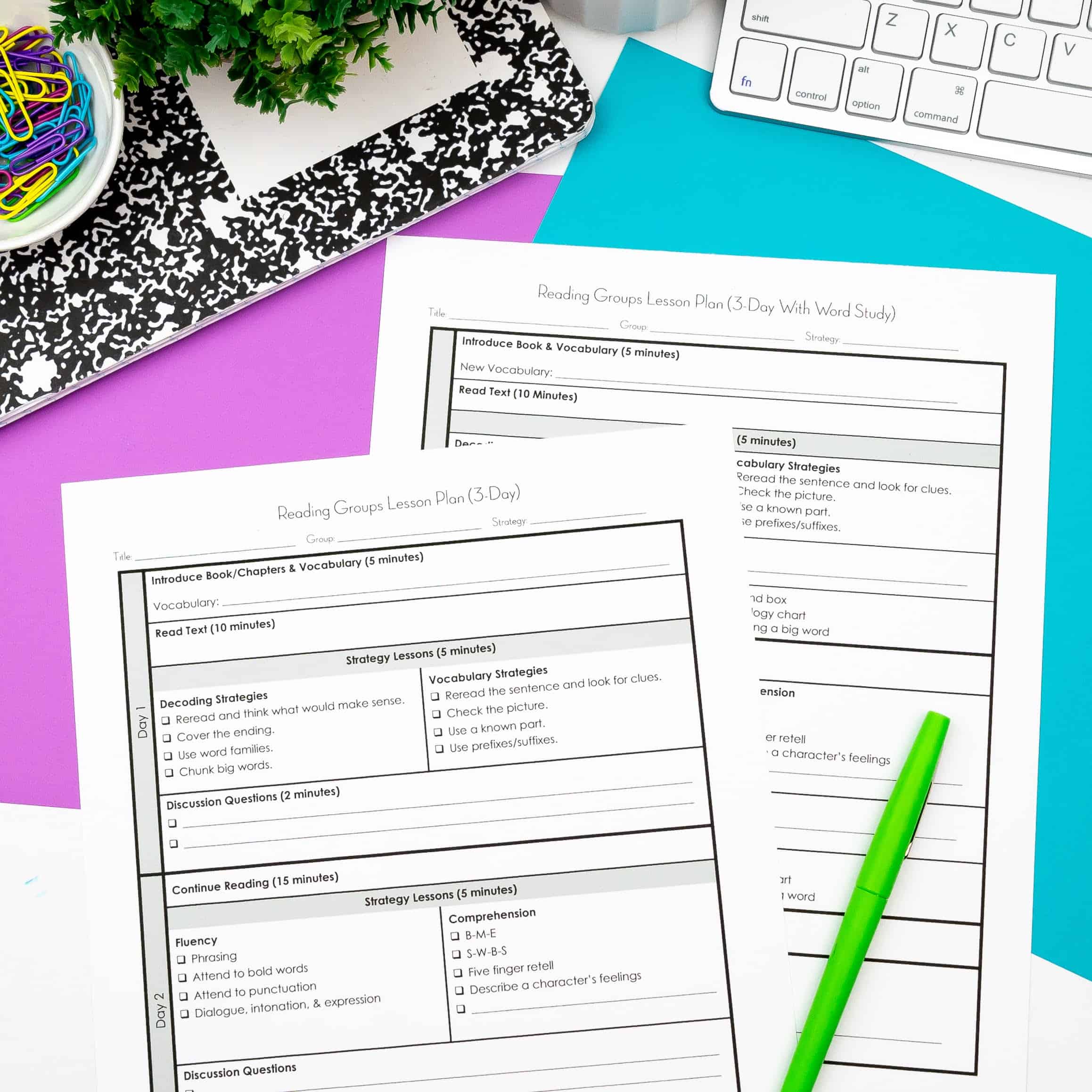
While my students are not meeting with me, they are independently reading. However, I do have my students write a reading response once a week. Each week I give students three options of reading response questions, and students write a response to one of the questions. I was careful to include at least one prompt a week that would work for an informational text.
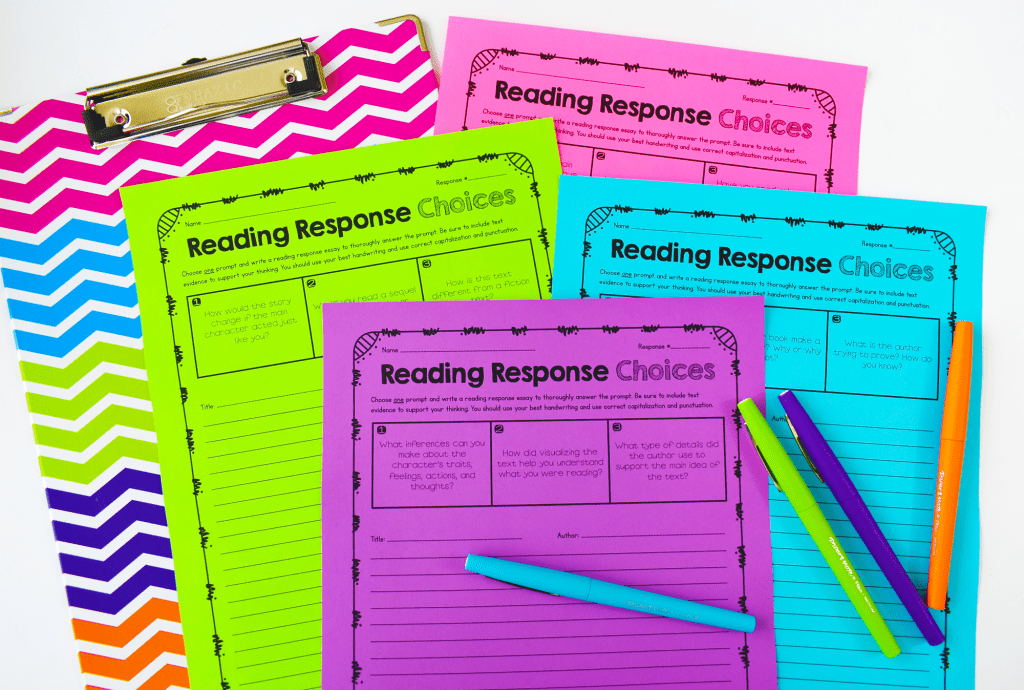
Teaching Reading With Literature Circles
Literature circles consist of small groups that are formed around a particular text choice. Students are assigned a chapter or chunk of text to read independently and are asked to bring some type of response to the literature circle meeting. In literature circles, students should ask many thought-provoking questions and learn from one another. It’s perfectly fine to have some students work with book clubs and other students work in more traditional guided reading groups. That flexibility is the beauty of reading workshop.
Implementing Literature Circles
When implementing literature circles, I typically choose five book options and let students choose their top 3 books and one book they absolutely do not want to read. This information informs me on how to assign each student a book. 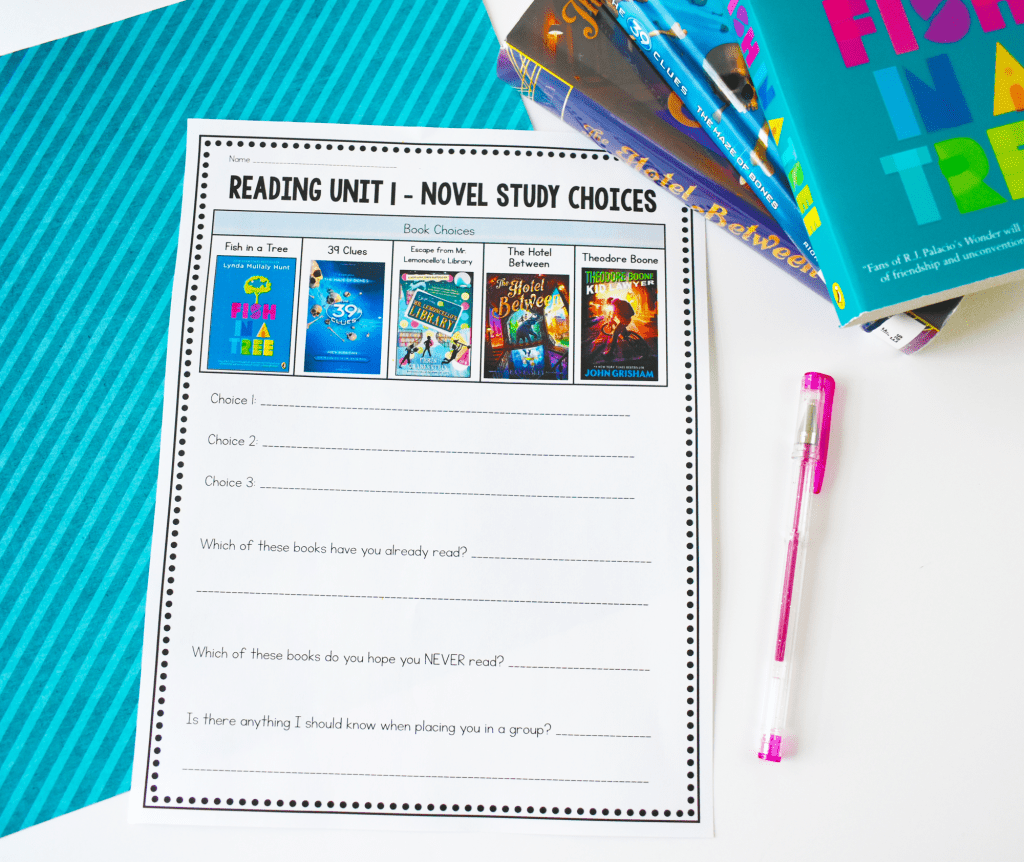
To keep students on track, I created Literature Circle Booklets for my students. Students use their booklets for the duration of the book. By far, the most challenging part of the entire process is having students keep up with their booklet for four weeks.
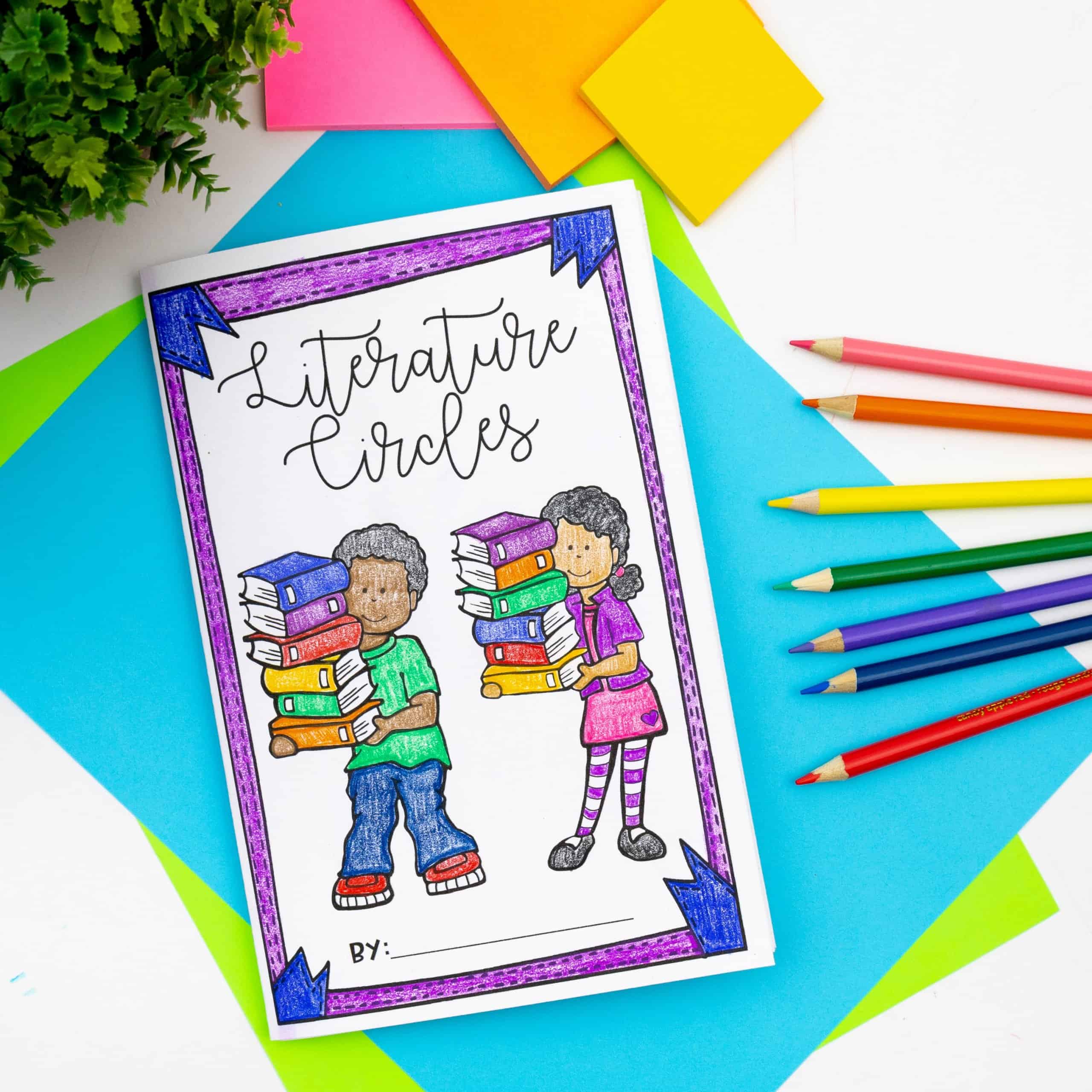
Teaching Reading – Discussion Director
During literature circles, each week students have a different role or responsibility. One role is Discussion Director. The discussion director is responsible for asking four opened ended questions about the week’s assigned reading. The first time I do literature circles, I have to teach students how to write open questions, but they typically catch on quickly. The Discussion Director will ask the questions on that week’s literature circle meeting.
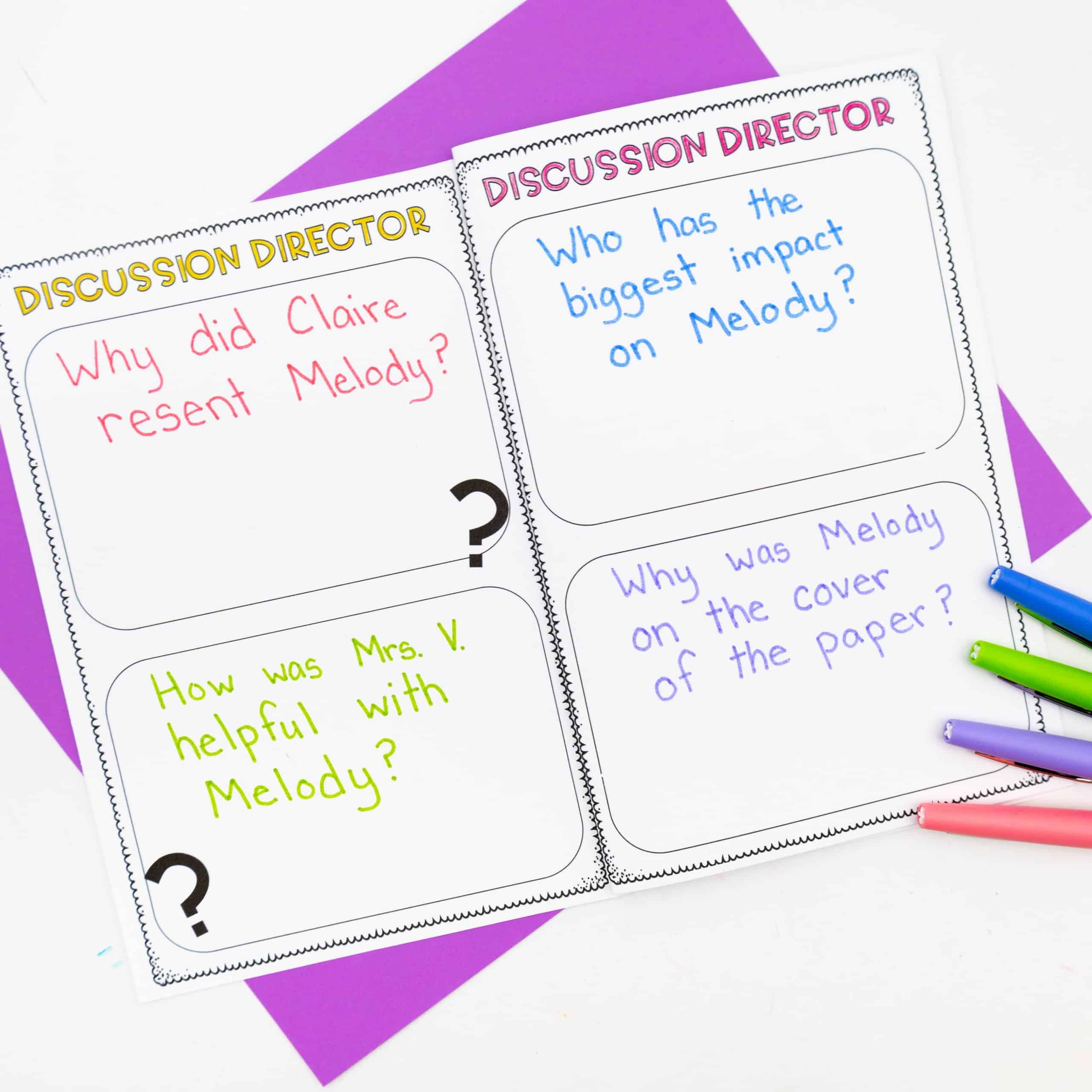
Passage Picker
Another role is the Passage Picker. The Passage Picker selects two passages from that week’s assigned reading that were meaningful to them. Students record the passage and explain why the passage was significant. They share and discuss that passage with their group in their literature circle meeting.
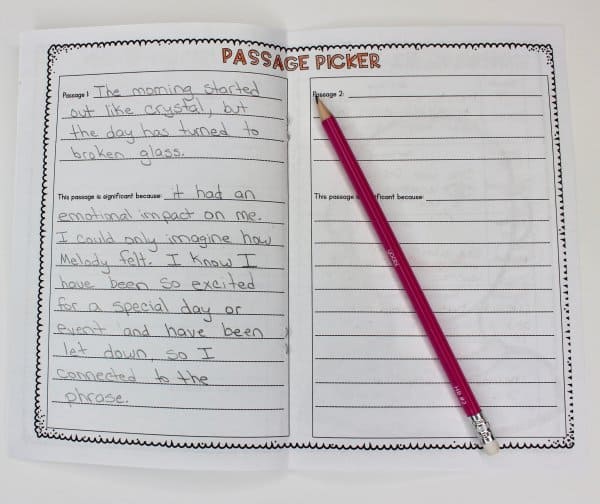
Character Sketch
Another literature circle role is the Character Sketcher. S/he must sketch the character using information from the text. The Character Sketcher also lists three character traits and uses text evidence to support those character traits. During the meeting the Character Sketcher will share the illustration and the character traits.
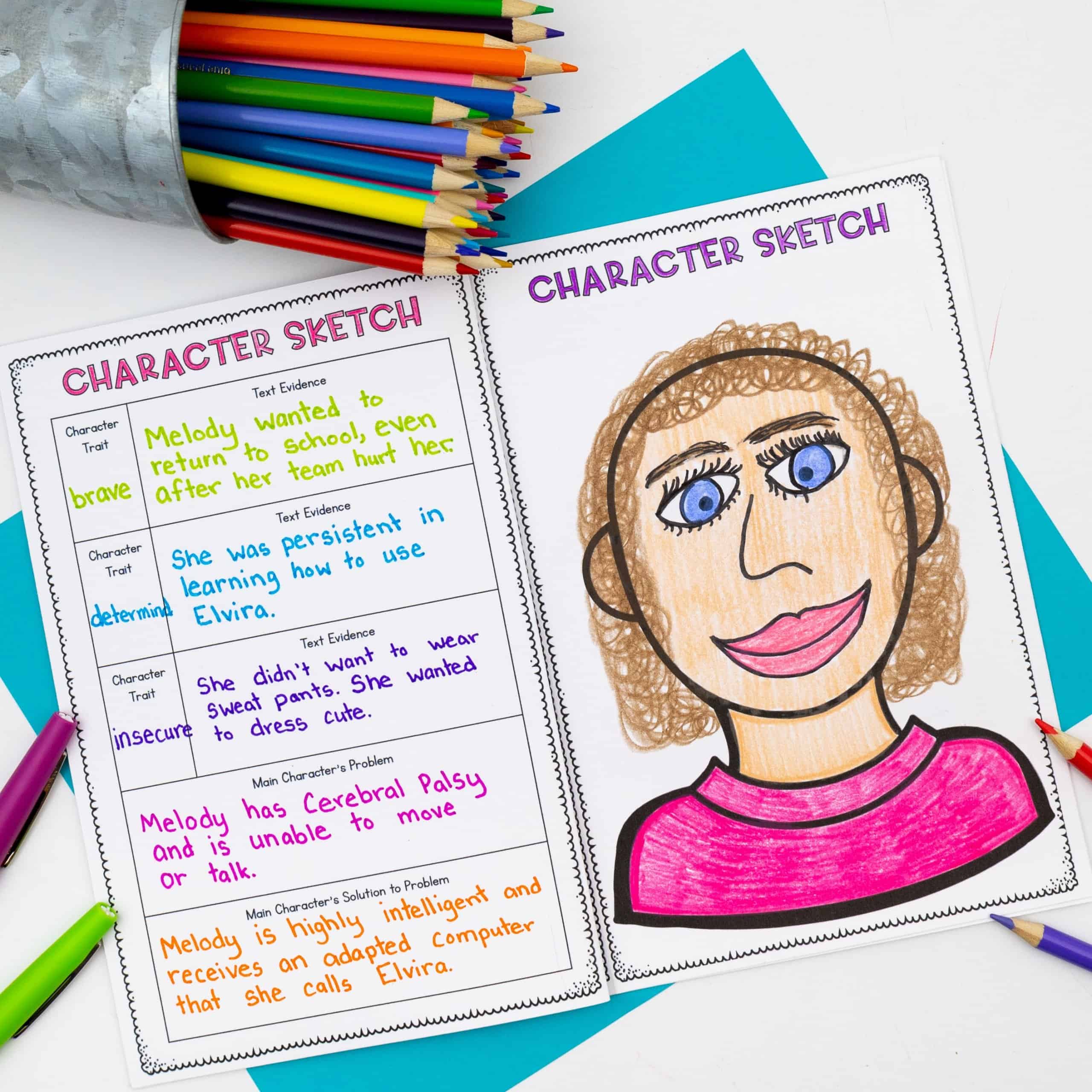
Word Wizard
The final job is the Word Wizard. The Word Wizard chooses four words from the week’s required reading. They write the word, the page the word the page was found on, how the word was used in the text, the definition of the word, and uses the word in the sentence. S/he will share the words they chose during the week’s literature circle meeting.
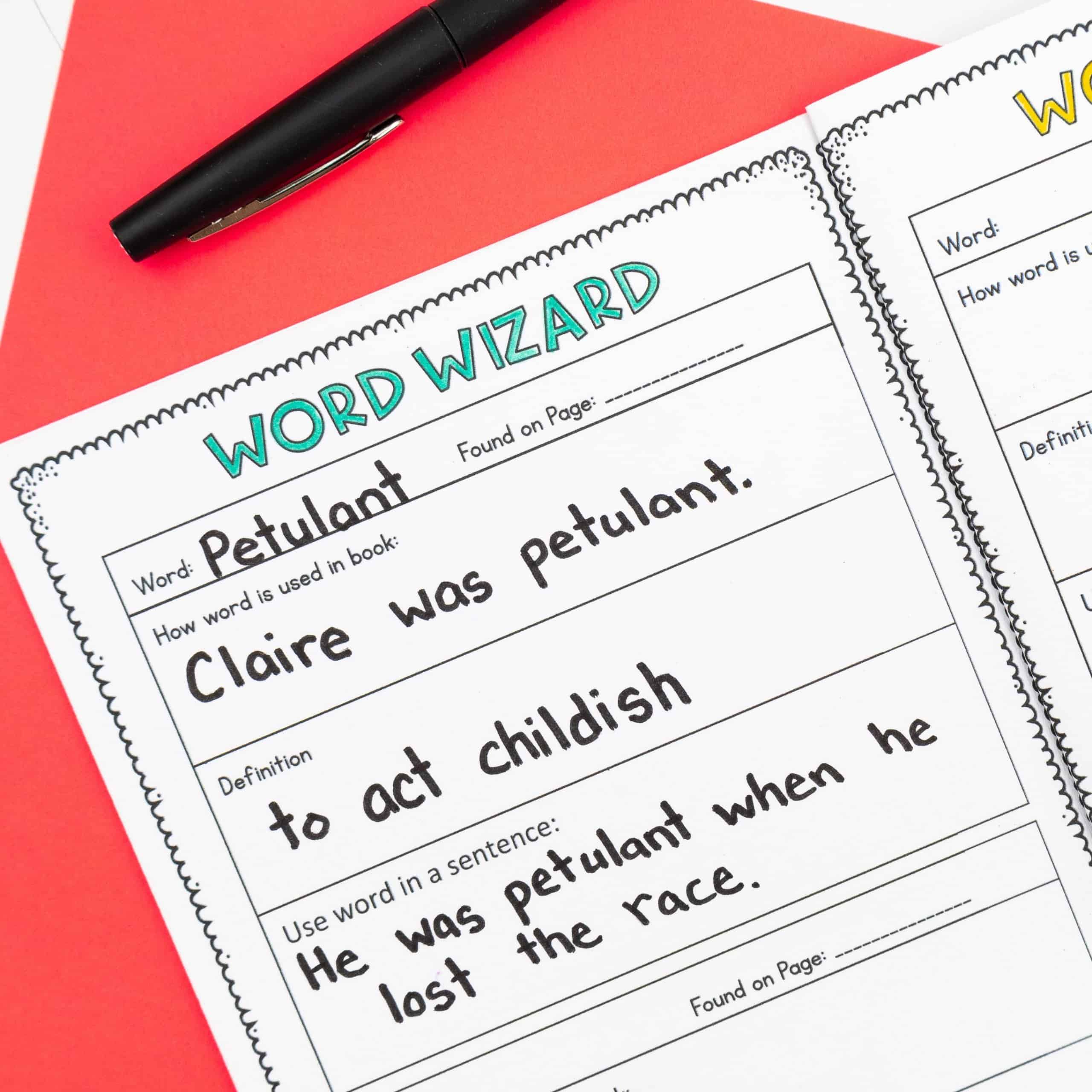
Since there are four jobs, I like to finish a book in four weeks, and I limit my group to four members in a group. This way everyone has a turn to do each job one time. I do have students write daily summaries of what they read each day. It gives a little extra accountability for students, which isn’t a bad thing.
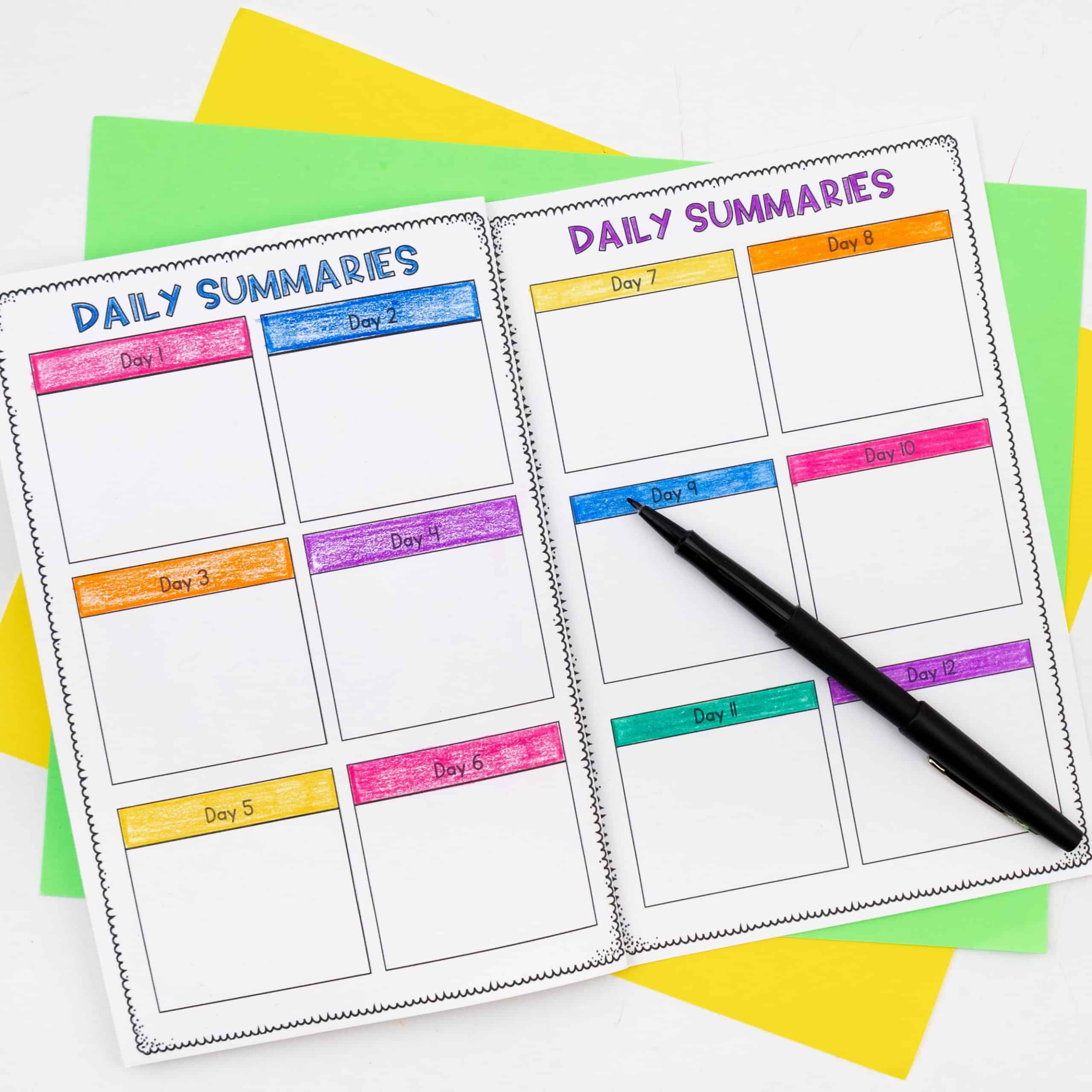
I don’t feel like my struggling readers benefit as much from literature circles as they do from their guided reading groups. However, I feel like my highest readers benefit more from literature circles than their guided reading groups. You can download the literature circle booklets here. If you’d like to dig a little deeper into reading groups, be sure to check out this post.
Hopefully this will give you some ideas on reading instruction for upper elementary. Let me know if you have any questions!



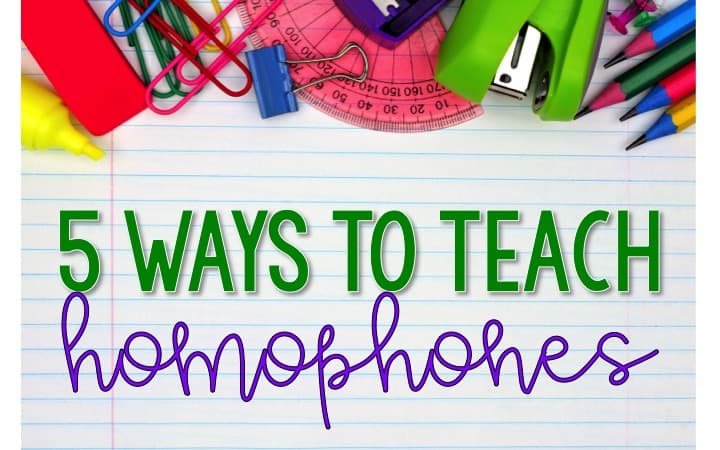
Dear Ashleigh,
Thank you for a great AND timely article here, especially as we fast approach the new school year. At the same time, resources for teachers and parents that promote literacy are always a very good thing! Those you provided here definitely fill the bill.
Your good readers might also be interested in 2 more resources for the many children who struggle to read each day (overhelmed or unfocused w/ ADHD, dyslexia, autism and other issues).
The physical, low-tech Reading Focus Cards (Patent 7,565,759) are multi-sensory solutions for challenged readers. Their companion tool, the Reading Focus Cards desktop app (Patent 8,360,779) for Macs & Win PCs, is very helpful when reading digital media—whether online or offline. Both of these tools are helpful for persons of all ages w/ dyslexia, ADHD & other challenges that can often impact reading success.
For Macs: https://itunes.apple.com/us/app/read-and-focus/id920617853?mt=12
For PCs: https://gumroad.com/l/ReadingFocusCards
For more information about this innovative desktop app, please visit the “Teachers With Apps” website: http://www.teacherswithapps.com/research-based-literacy-tool-evolves-helpful-app-struggling-readers/. For additional information about the low-tech Reading Focus Cards for physical books and documents, please visit http://www.FocusandRead.com/products.
Thanks again for the wonderful article here—AND for ALL you do daily to help teachers, parents and their families!
Happy Reading!
Joan M. Brennan
Reading Specialist
Brennan Innovators, LLC
Do you sell a copy of the guided reading group lesson plans? I have your reading workshop bundle from tpt, but haven’t seen any guided reading lessons.
Where can I find copies of your 3-day or 4-day Reading Group Lesson Plan Sheets?
Thanks!
Hi Ashleigh,
I am interested in your reading workshop and guided reading bundles. Could you you forward me the unit plans along with the standards each lesson addresses
I would love a copy of your guided reading lesson plans too!
This is incredible information! Thank you so much for helping me understand how Literature Circles work!
This was so helpful! Is there any way I could get the names of the books you use for each unit in guided reading?
Yes! You can find them here. https://www.teacherspayteachers.com/Product/Reading-Workshop-Overview-Resources-FREE-3241233
I have all of your Reading Workshops Units, I love them!!
Can you provide me the template or lesson plans you use for your guided reading 3- day and 4-day plans?
Thank you!
Hi This is awesome. I so appreciate your thoughtful and self reflective nature. It clearly shines through this post.
Do you have a first grade counterpart to this?
Thank you and TEACH ON!
This is so helpful! Thank you for all of the support you provide.
I really appreciate all of your resources. I have your reading workshop program (among other wonderful things from your store). Thank you for sharing so much of your knowledge. Do you have a blog where you have written about how to structure ELA time if you have a required basal reading curriculum?
Great posts and resources!! 🙂
Where can I purchase your Reading Groups lesson plan template?
I have that in my digital teacher binder.